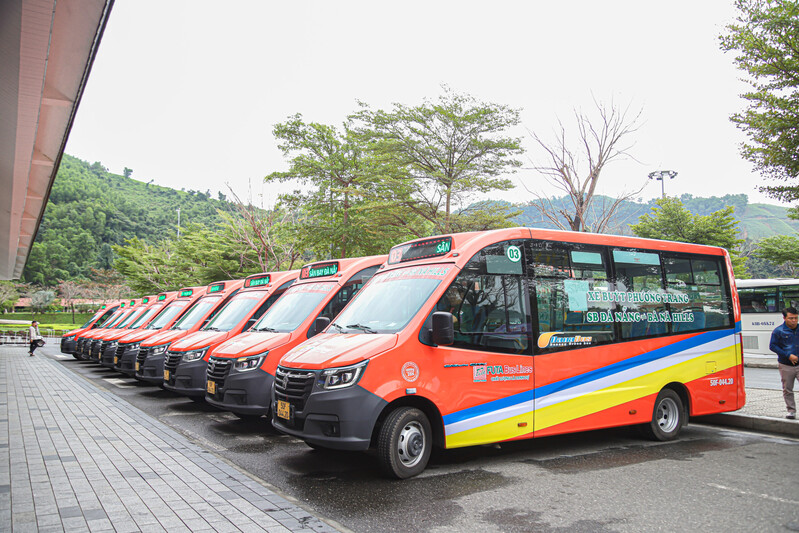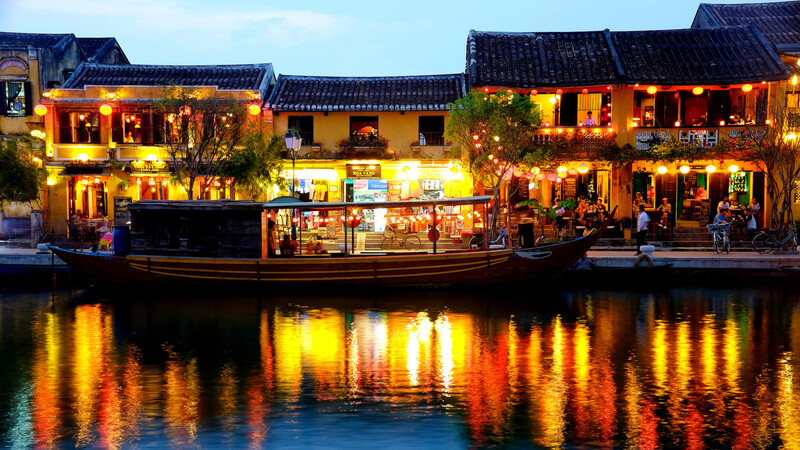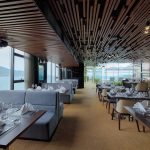Dien Tho Palace – the most magnificent structure in the Imperial City of Hue, still retains the distinctive architectural features of the Nguyen Dynasty. The palace has a history closely associated with many generations of Empress Dowagers and was built to express the filial piety of the kings towards their revered mothers.
Table of Contents
One of the Rare Remaining Palaces in the Ancient Capital of Hue
Address: 75 Le Huan, Phu Hau, Hue City, Thua Thien Hue
Opening Hours:
- Summer: 6:30 AM – 5:30 PM
- Winter: 7:00 AM – 5:00 PM
Entrance Fees (updated in November 2023):
- Children (< 1.3m): 30,000 VND/person
- Adults: 120,000 VND/person
- Foreigners: 150,000 VND/person
Dien Tho Palace, built in 1804, is an architectural system that preserves the long-standing cultural and historical beauty of Thua Thien Hue. This structure is located in the northwest of the Imperial City of Hue, next to Thai Hoa Palace, west of the Forbidden Purple City, and south of Truong Sanh Palace.
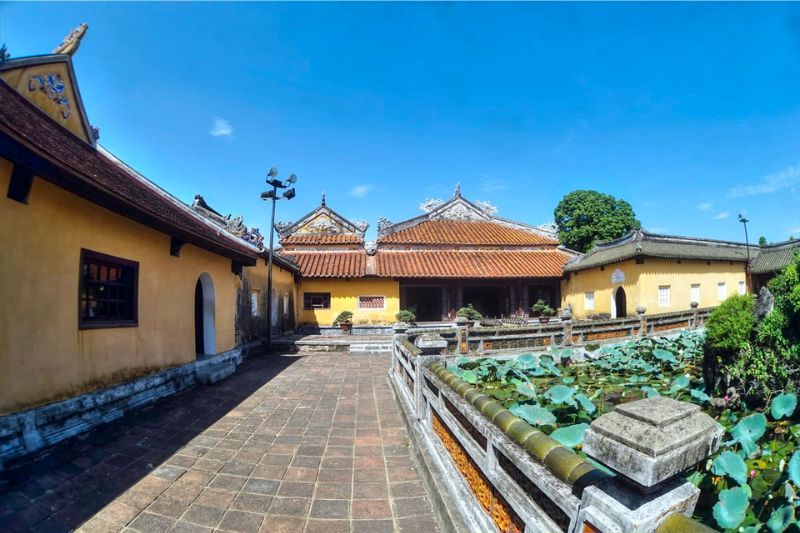
With more than 20 large and small buildings set within a rectangular area approximately 100 meters wide and 150 meters long, this is one of the most magnificent and splendid palaces in the land of poetry. In 1993, this palace was included in the list of 16 monuments of the Hue Ancient Capital Complex and was recognized by UNESCO as a World Cultural Heritage site.
Transportation and Directions to Dien Tho Palace
Dien Tho Palace is located not far from the center of Hue City, so you can get there using various means of transportation such as bus, taxi, private car with a driver in Hue, motorcycle, etc. Typically, personal vehicles, especially motorcycles, are preferred by many people as they help save costs and make it easier to visit additional tourist spots during the trip.
To visit this famous Hue palace, the most convenient route is to go along Hung Vuong Street or Le Loi Street → cross Truong Tien Bridge → turn onto Le Quy Don Street. From here, go straight for about 3.3 km and turn left onto Le Huan Street. Dien Tho Palace is located at number 75 on this street.
Additionally, you can use motorbike tour services to explore Hue city, visiting various places such as the Imperial City of Hue, Hue royal tombs, Thien Mu Pagoda, and the abandoned Thuy Tien Lake water park,…
Travel Back in Time to Explore the History of Dien Tho Palace
The Significance of Dien Tho Palace
Dien Tho Palace, with its vast scale, served as the residence of the Empress Dowagers, the mothers of the kings. Initially named Truong Tho Palace, it was subsequently renamed Tu Tho, Gia Tho, Ninh Tho, and finally Dien Tho, which is the name used to this day. Despite numerous changes in both structure and name, the palace’s role has remained consistent with its original purpose: to reflect the filial piety of the Nguyen Dynasty kings towards their revered mothers.
Dien Tho Palace Through the Reigns of Nguyen Dynasty Kings
Records indicate that Dien Tho Palace has existed through the reigns of several Nguyen Dynasty kings, including:
- King Gia Long: King Gia Long was the one who built Truong Tho Palace as a residence for the Queen Dowager, replacing Hau Palace in April 1804.
- King Minh Mang: During the reign of King Minh Mang, Tu Tho Palace was constructed within the grounds of Truong Tho Palace to serve as a retreat for Empress Dowager Thuan Thien Cao Hoang, Tran Thi Dang.
- King Tu Duc: In February 1849, King Tu Duc dismantled Tu Tho Palace and built Gia Tho Palace in its place as a residence for Empress Dowager Tu Du.
- King Thanh Thai: During King Thanh Thai’s reign, the structure was renamed Ninh Tho Palace and came under the ownership of Empress Dowager Tu Du (mother of King Tu Duc), and later Empress Dowager Tu Minh Hue (mother of King Thanh Thai).
- King Khai Dinh: The palace was restored and renamed Dien Tho for the last time, becoming the residence of Empress Dowager Phu Thien Thuan.
Tips for Visiting Dien Tho Palace in Hue
The Best Time to Visit Dien Tho Palace
Experienced travelers to Hue often choose to visit Dien Tho Palace between September and April each year when the weather is most favorable for outdoor activities.
- From September to December: The weather in Hue is cool and not too sunny, making it comfortable to plan your trip. This period also marks the time when the ancient trees in Dien Tho Palace start to shed their leaves, creating a beautiful setting for check-in photos.
- From February to April: This time coincides with the dry season in Hue, featuring plenty of sunshine and little rain, making it ideal for sightseeing and exploration.
Nearby Accommodation Options
In addition to visiting Dien Tho Palace, VnCarRentals.com suggests staying in Hue for a few days to fully explore its famous cultural and historical sites. Here are some popular accommodation options among travelers:
- Azerai La Residence Hue: 5 Le Loi, Vinh Ninh, Hue City, Thua Thien Hue
- Moonlight Hotel Hue: 20 Pham Ngu Lao, Phu Hoi, Hue City
- Indochine Palace: 105A Hung Vuong, Phu Nhuan, Hue City
If you are in Da Nang or Hoi An and looking for a trip to Hue, the private car rental service with a driver from Da Nang to Hue by VnCarRentals.com can help you achieve that. With professional pick-up and drop-off services and many years of experience, you can rest or visit famous tourist spots along the way such as Hai Van Pass, Lap An Lagoon, Lang Co Beach, and any other destination you desire. Additionally, if you wish to book a day tour from Da Nang to Hue, you can book directly with us.
Architecture of Hue Palace Preserves Vietnam’s Cultural and Historical Beauty
The Main Hall of Dien Tho Palace
The Main Hall, located at the center of Dien Tho Palace, is built with brick and black lacquered wood. This grand structure spans approximately 960 square meters and features intricate and meticulous carvings typical of the architectural style under King Gia Long. Despite thousands of years passing, the interior of the Main Hall remains intact, including the valuable “Dien Tho Palace” plaque and eight mirror paintings.
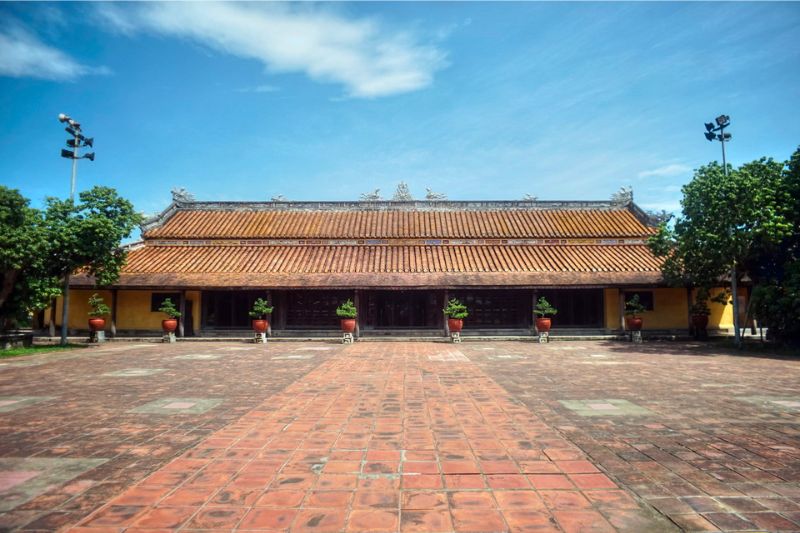
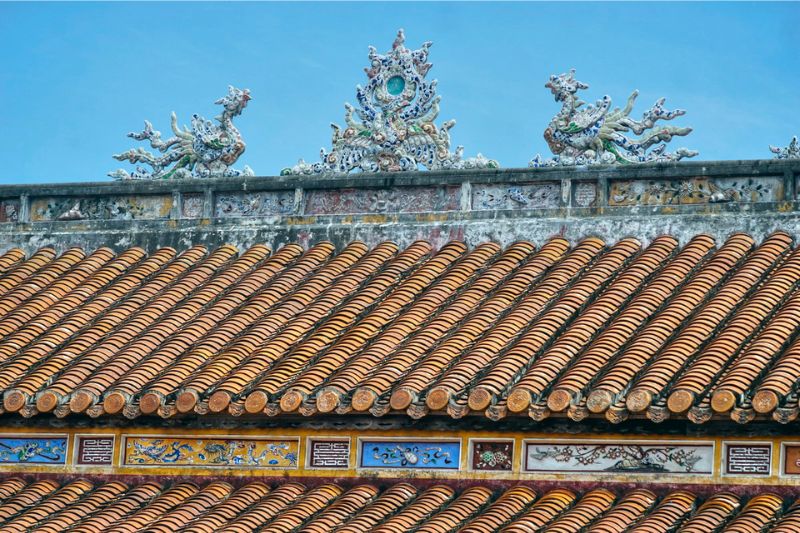
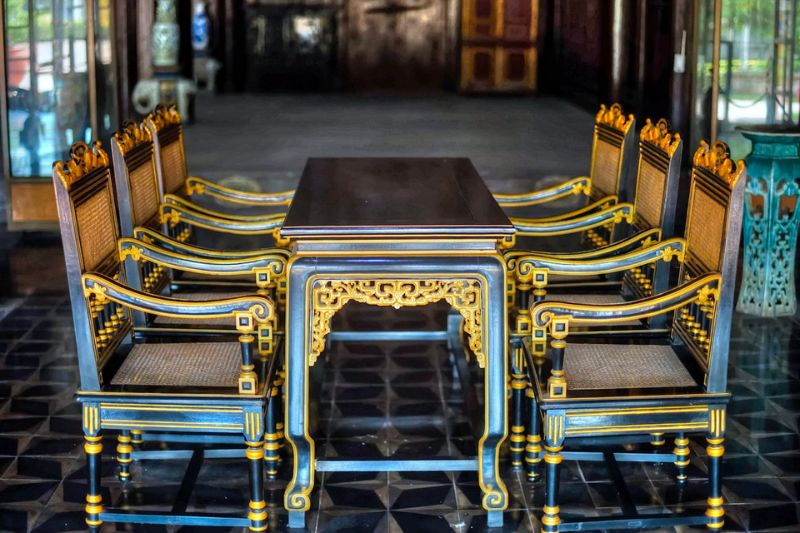
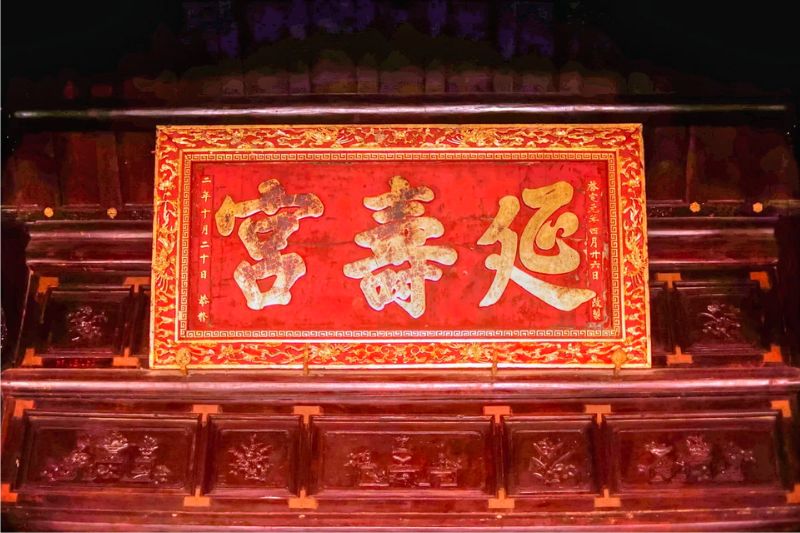
Ta Tra House and Tinh Minh Pavilion
Adjacent to the Main Hall is Ta Tra House, where guests were received to visit the Empress Dowagers of the time. The structure consists of three rooms and two wings, built with brick and wood, materials characteristic of East Asian architecture. Across a spacious courtyard from Ta Tra House and facing the Main Hall is Tinh Minh Pavilion, constructed during King Bao Dai’s reign with Western architectural influences.
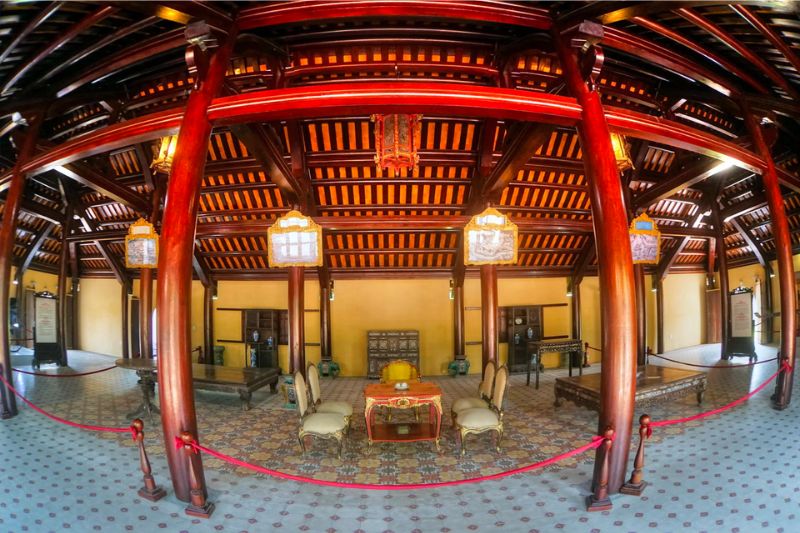
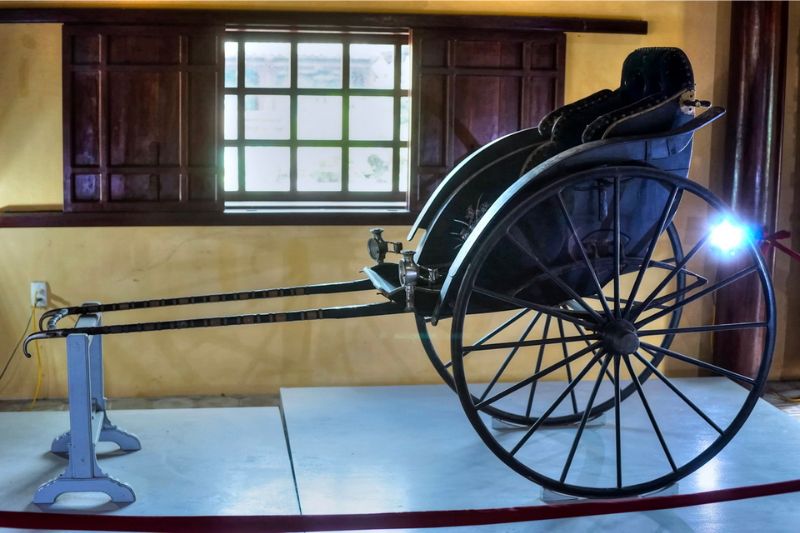
Khuong Ninh Pavilion
Khuong Ninh Pavilion was built for Buddhist worship and to meet the religious needs of the Empress Dowagers and the imperial harem. The two-story wooden building boasts balanced and harmonious architecture. This rare structure is situated in a secluded area, separated from the outside by an enclosed wall.
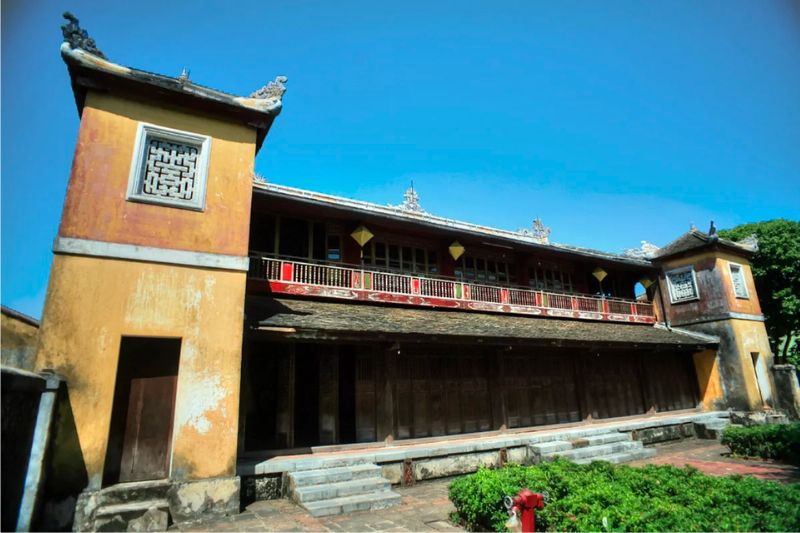
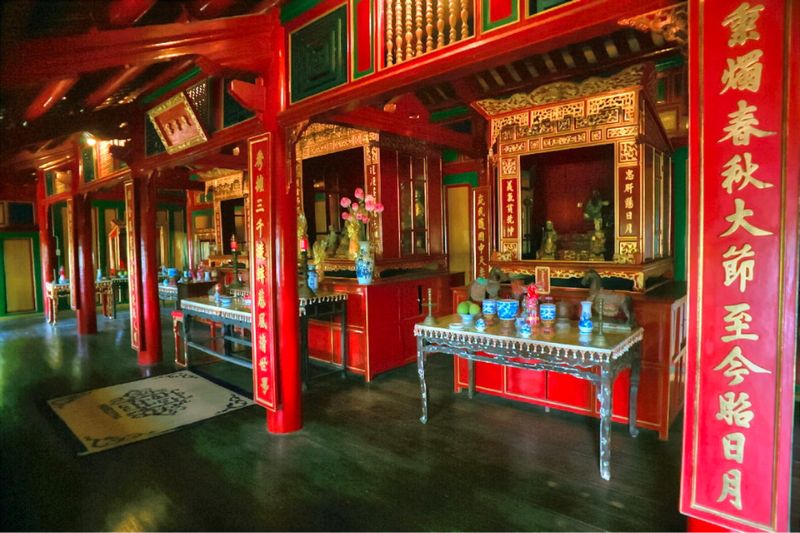
Ta Truong Du Pavilion
Located east of the Main Hall of Dien Tho Palace, Ta Truong Du Pavilion is designed in the traditional Hue house style, featuring one main room and four wings. The pavilion has a green-glazed tile roof, tiled floors, wooden walls, and intricately carved interiors. Surrounded by lotus ponds and lush greenery, Ta Truong Du was a place for the Empress Dowagers to rest and relax.
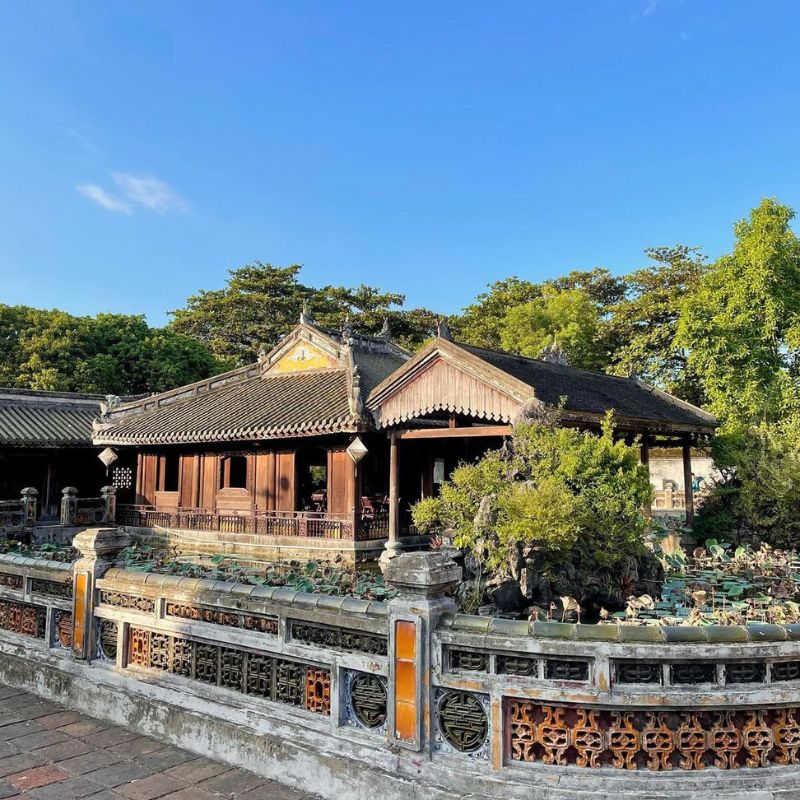
Other Minor Structures
Over time, some auxiliary structures in Dien Tho Palace have been destroyed, leaving only their foundations. However, thanks to local preservation efforts, the area still retains its majestic, ancient beauty with many impressive minor structures. Notable examples include the high walls surrounding the grounds, the long brick screen, corridors connecting the buildings, and the square well. All these elements contribute to recreating a historical picture of Vietnam from thousands of years ago.
Tips for Visitors
- When visiting Dien Tho Palace, it is recommended to wear polite, long-sleeved clothing. If you want to take photos that match the palace’s scenery, consider packing traditional outfits or an ao dai.
- Be sure to follow the site’s regulations, such as not touching artifacts and not taking photos or recording in restricted areas.
- To avoid getting lost in the Imperial City of Hue, it is advisable to check the route to Dien Tho Palace in advance.
Dien Tho Palace, with its grand scale, is one of the remarkable architectural imprints of the Nguyen Dynasty still preserved in the ancient capital. When traveling to Hue, don’t miss the opportunity to visit this space that once served as the residence and living quarters of the Empress Dowagers. Moreover, you can capture some impressive check-in photos. This site promises to provide you with a fascinating historical and cultural exploration experience.
